Shipibo People & Culture
An Enduring Way of Life in the Heart of the Amazon
Shipibo People & Culture
An Enduring Way of Life in the Heart of the Amazon
Bearing ancient wisdom that the world has all but forgotten...
The Shipibo people are a fascinating indigenous tribe who have lived in the heart of the Amazon rainforest for an estimated 3,000 years. During that time they have been relatively uninterrupted by other cultures.
Today there is growing international interest in the immense body of ancestral knowledge that traditional Shipibo shamans hold for healing with Amazonian plant medicines. In particular their knowledge for healing with Ayahuasca and other Master Plants is renowned throughout the Amazon.
Since 2007, the founders of Caya Shobo have studied and interacted with high-level Shipibo shamans and visited their homes to know their way of life first-hand. We’ve learned that these warm, sensitive people have a generous culture, and a sacred respect for life.
They are lineage-bearers of ancient knowledge regarding the physical and energetic healing powers of nature, which has otherwise been lost in the world.
Shipibo traditional medicine represents a living heritage treasure from the ancient natural world.
Shipibo traditional medicine represents a living heritage treasure from the ancient natural world.
Bearing ancient wisdom that the world has all but forgotten...
The Shipibo people are a fascinating indigenous tribe who have lived in the heart of the Amazon rainforest for an estimated 3,000 years. During that time they have been relatively uninterrupted by other cultures.
Today there is growing international interest in the immense body of ancestral knowledge that traditional Shipibo shamans hold for healing with Amazonian plant medicines. In particular their knowledge for healing with Ayahuasca and other Master Plants is renowned throughout the Amazon.
Since 2007, the founders of Caya Shobo have studied and interacted with high-level Shipibo shamans and visited their homes to know their way of life first-hand. We’ve learned that these warm, sensitive people have a generous culture, and a sacred respect for life.
They are lineage-bearers of ancient knowledge regarding the physical and energetic healing powers of nature, which has otherwise been lost in the world.
Honoring the sacred wisdom and healing power of nature
Artwork by Luis Tamani
An enduring culture in the heart of the Amazon
Protected by the rich heart of the jungle
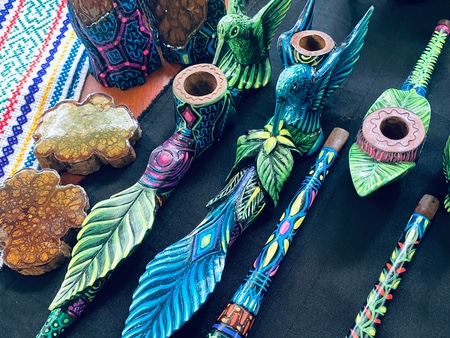
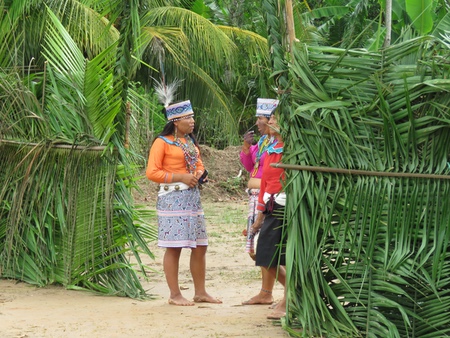
Shipibo locals gather during their annual Ani Xiati (big party)
The Shipibo are one of the oldest and largest tribes of the western Amazon basin. They have an estimated population today of around 35,000. Their origins are tied to Paleo-Indian peoples who arrived in the lower Amazonian region about 10,000 years ago. Shipibo people themselves believe their culture is around 3,000 years old.
The ancestral territory of the Shipibo lies along the banks of the Ucayali River. The Ucayali is the 2,700km main headstream of the Amazon River, which runs north and south of Pucallpa in Peru. Roughly 200 villages are scattered along the tributaries of the Ucayali, where the Shipibo people live wholly immersed in the richly abundant natural life of the Amazon jungle.
Due to their remote location in the dense heart of the rainforest, the Shipibo people have quietly resisted being overcome by incoming cultures over the centuries. They have strategically engaged in trade activity with visitors such as the Incas, Spanish priests and Brazilian colonialists. But they have remained relatively uninfluenced in their culture and way of life. This is a unique situation relative to most other Amazonian indigenous cultures, which have been eradicated or largely absorbed into western colonialism and Christian culture.
Most Shipibo people today continue to speak their native language as a first choice. And they maintain a strong connection with their rich and mysterious culture and traditions. Their deep connection with the nature of the Amazon rainforest infuses all aspects of their life – physical, cultural and spiritual.
An enduring culture in the heart of the Amazon
Protected by the rich heart of the jungle

The Shipibo are one of the oldest and largest tribes of the western Amazon basin. They have an estimated population today of around 35,000. Their origins are tied to Paleo-Indian peoples who arrived in the lower Amazonian region about 10,000 years ago. Shipibo people themselves believe their culture is around 3,000 years old.
The ancestral territory of the Shipibo lies along the banks of the Ucayali River. The Ucayali is the 2,700km main headstream of the Amazon River, which runs north and south of Pucallpa in Peru. Roughly 200 villages are scattered along the tributaries of the Ucayali, where the Shipibo people live wholly immersed in the richly abundant natural life of the Amazon jungle.

Due to their remote location in the dense heart of the rainforest, the Shipibo people have quietly resisted being overcome by incoming cultures over the centuries. They have strategically engaged in trade activity with visitors such as the Incas, Spanish priests and Brazilian colonialists but have remained relatively uninfluenced in their culture and way of life. This is a unique situation relative to most other Amazonian indigenous cultures, which have been eradicated or largely absorbed into western colonialism and Christian culture.
Most Shipibo people today continue to speak their native language as a first choice and maintain a strong connection with their rich and mysterious culture and traditions. Their deep connection with the nature of the Amazon rainforest infuses all aspects of their life – physical, cultural and spiritual.
Ancient heritage treasure of sacred wisdom
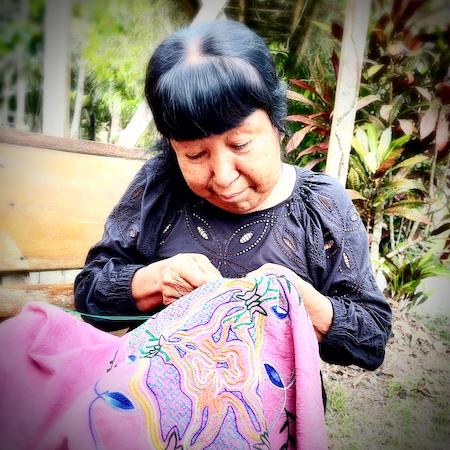
Ancient, enduring culture
Shipibo people have lived in the heart of the Amazon rainforest for 3,000 years. The fierce and wild natural landscape has inhibited incomers from over-running their culture.
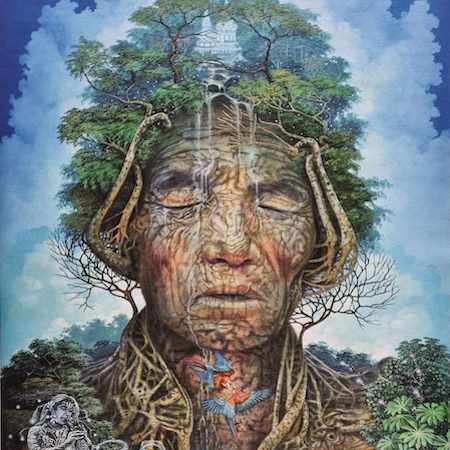
Immersed in energy of life
Living immersed in the palm of Earth’s richest rainforest, the spiritual energies in nature are an unmistakable, daily experienced reality for Shipibo people and especially for shamans.
ARTWORK BY LUIS TAMANI
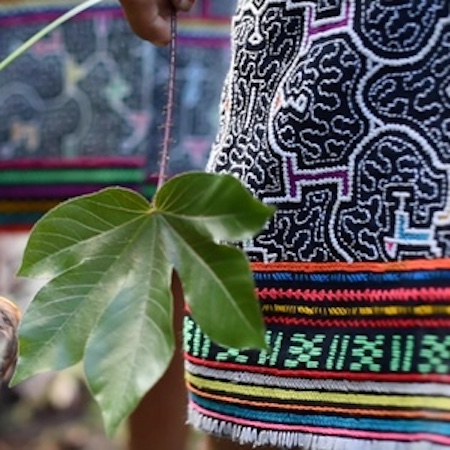
Plants to enter worlds
Shipibo shamans work with sacred knowledge plants, such as Ayahuasca and the Master Plants, to “enter” the energetic worlds with their mind and spirit.
Shipibo Home, Family and Community Life
Together in harmony with nature
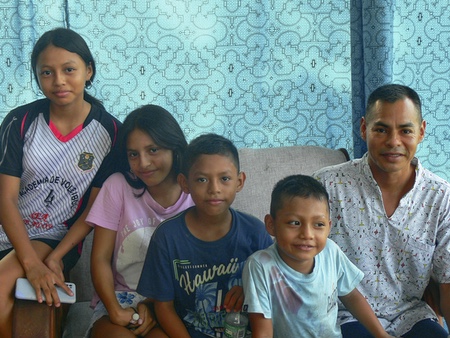
Master Shipibo shaman Arturo Izquierdo with his four children
The tributaries and lakes of the Ucayali river system offer richly abundant resources in their waters and alluvial soils. Around 100 to 500 people live in each Shipibo settlement, in simple wood houses or Shobo. Shobo are platforms (typically without walls), raised on tall poles to withstand annual floods. Extended families live in Shobo clusters, around a common gathering area. Some shamanic families have their own Maloka (Ayahuasca ceremony space).
Most Shipibo families focus on hunting small wildlife and fish and cultivating crops such as rice, peanuts, beans, yuca, etc. General herbal healing knowledge is common. However, usually only a few families in each community specialize as master shamanic healers (Onánya).
In our experience getting to know many Shipibo folks over the years, we have found them to be incredibly sweet-natured and sensitive people. Their cultural perspective on life is inherently different from a Western view. This is particularly noticeable in how community-minded and generous of heart they are. And in the innate respect they hold for the sacred nature of life.
Shipibo people tend to be highly alert to subtle shifts in their environment, as are all living beings in the jungle. Such keenness of attention lends them to being rather quiet and even shy in demeanor. They take their time to build trust and loyal friendships. Having said that, we’ve never met a Shipibo person who doesn’t have a good sense of humor or enjoy a good joke.
Shipibo Home, Family and Community Life
Together in harmony with nature

Master Shipibo shaman Arturo Izquierdo with his four children
The tributaries and lakes of the Ucayali river system offer richly abundant resources in their waters and alluvial soils. Around 100 to 500 people live in each Shipibo settlement, in simple wood houses or Shobo. Shobo are platforms (typically without walls), raised on tall poles to withstand annual floods. Extended families live in Shobo clusters, around a common gathering area. Some shamanic families have their own Maloka (Ayahuasca ceremony space).
Most Shipibo families focus on hunting small wildlife and fish and cultivating crops such as rice, peanuts, beans, yuca, etc. General herbal healing knowledge is common. However, usually only a few families in each community specialize as master shamanic healers (Onánya).
In our experience getting to know many Shipibo folks over the years, we have found them to be incredibly sweet-natured and sensitive people. Their cultural perspective on life is inherently different from a Western view. This is particularly noticeable in how community-minded and generous of heart they are. And in the innate respect they hold for the sacred nature of life.
Shipibo people tend to be highly alert to subtle shifts in their environment, as are all living beings in the jungle. Such keenness of attention lends them to being rather quiet and even shy in demeanor. They take their time to build trust and loyal friendships. Having said that, we’ve never met a Shipibo person who doesn’t have a good sense of humor or enjoy a good joke.
Master Plant Dieta - an ancestral Shipibo practice
Over the millennia, Shipibo Onánya shamans have identified certain plants as Teacher spirits – these are known as the Master Plants. Master Plant Dieta is a shamanic practice involving restrictions in food and lifestyle, to facilitate direct energetic connection with a Master Plant.
During Ayahuasca Retreat at Caya Shobo you can experience Master Plant Dieta for yourself. You will start to learn how long-term Dieta practice can bring about deep, lasting healing and personal transformation.
Shipibo cosmo-vision and art
Depicting the sacred wonder of the energetic or spiritual realms
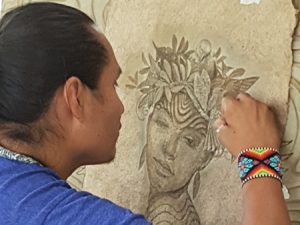
Visionary Artist Luis Tamani expresses the beauty of nature’s energy
Shipibo people have a vivid cosmo-vision. It incorporates many beliefs about a sun creator, other divine beings, the origin and structure of the universe and the journey of life and death within it.
But perhaps most central to the Shipibo way of life is the idea of an energetic world that exists beyond this physical reality. This perspective is deeply held. It is not just mythical legend or story, but is a a directly experienceable actuality. Through disciplined shamanic practices with Ayahuasca and the Master Plants, the Shipibo believe we can travel into the energetic world to “see” and engage with the spiritual essences in nature.
Shipibo craftsmen and women create strikingly beautiful works of pottery, embroidered textiles, paintings and beaded jewelry. These artworks express their cosmo-vision and the spiritual and energetic forms in nature. Especially notable are the works of maestra Shipiba shamans, depicting the mystical wonder of their visions received during years of Master Plant Dieta practice and Ayahuasca.
Shipibo cosmo-vision and art
Depicting the sacred wonder of the energetic or spiritual realms
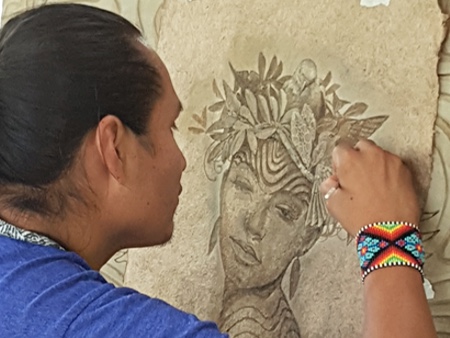
Visionary Artist Luis Tamani expresses the beauty of nature’s energy
Shipibo people have a vivid cosmo-vision. It incorporates many beliefs about a sun creator, other divine beings, the origin and structure of the universe and the journey of life and death within it.
But perhaps most central to the Shipibo way of life is the idea of an energetic world that exists beyond this physical reality. This perspective is deeply held. It is not just mythical legend or story, but is a a directly experienceable actuality. Through disciplined shamanic practices with Ayahuasca and the Master Plants, the Shipibo believe we can travel into the energetic world to “see” and engage with the spiritual essences in nature.
Shipibo craftsmen and women create strikingly beautiful works of pottery, embroidered textiles, paintings and beaded jewelry. These artworks express their cosmo-vision and the spiritual and energetic forms in nature. Especially notable are the works of maestra Shipiba shamans, depicting the mystical wonder of their visions received during years of Master Plant Dieta practice and Ayahuasca.
Caya Shobo understands deeply how the medicine works and has genuine and honorable relationships with the Shipibo people.”
Felicia
Learn more about how Shipibo traditional medicine can help you
Our experienced facilitators are available to answer your questions about Shipibo healing
Ayahuasca and Shipibo shamanism
Preserving vitally important ancestral knowledge
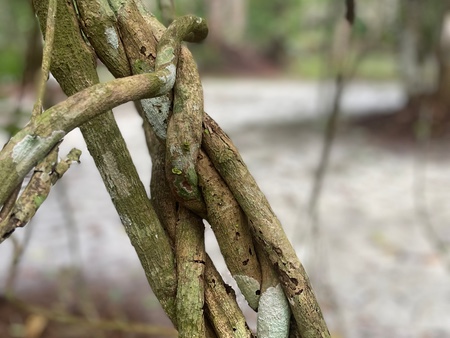
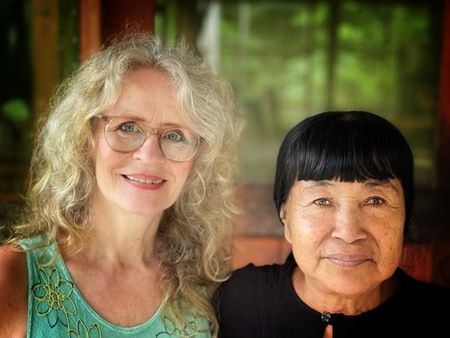
Ayahuasca vine growing at the Caya Shobo healing center
An exploration of Shipibo culture would not be complete without discussing the entheogenic plant medicine Ayahuasca. The Shipibo shamans are renowned for their expert knowledge about Ayahuasca, which is drawing such worldwide attention to this tribe today.
Some Shipibo shamans believed their ancestors to be the original creators of the Ayahuasca brew an estimated 3,000 years ago. Over the generations they have evolved their knowledge for healing with Ayahuasca, which is used especially as a diagnostic tool. Shipibo shamans describe Ayahuasca as the “heart of life” for their people.
Unfortunately, we can observe that with the growing global fascination with Ayahuasca, and the recent influx of western shamanic tourism to their region, an erosion of ancestral Shipibo traditions is underway.
At Caya Shobo we are committed to honoring and upholding the true ancestral Shipibo shamanic healing traditions, by:
- Providing a sanctuary for real healing in the traditional way of the Shipibo shamans at our Ayahuasca Retreats
- Combining Ayahuasca healing with traditional, personalized Shipibo Master Plant Dieta treatment and other plant therapies
- Working only with genuine master Shipibo Onánya shamans who all hold a minimum of 25 years of verifiable healing experience
- Being dedicated to long-term Master Plant Dieta practice ourselves.
By these commitments we help preserve the Shipibo shamanic traditions with integrity and skill. And we are able to share the depths of this ancestral wisdom with you, directly from our own experience.
Ayahuasca and Shipibo shamanism
Preserving vitally important ancestral knowledge

Ayahuasca vine growing at the Caya Shobo healing center
An exploration of Shipibo culture would not be complete without discussing the entheogenic plant medicine Ayahuasca. The Shipibo shamans are renowned for their expert knowledge about Ayahuasca, which is drawing such worldwide attention to this tribe today.
Some Shipibo shamans believed their ancestors to be the original creators of the Ayahuasca brew an estimated 3,000 years ago. Over the generations they have evolved their knowledge for healing with Ayahuasca, which is used especially as a diagnostic tool. Shipibo shamans describe Ayahuasca as the “heart of life” for their people.
Unfortunately, we can observe that with the growing global fascination with Ayahuasca, and the recent influx of western shamanic tourism to their region, an erosion of ancestral Shipibo traditions is underway.
At Caya Shobo we are committed to honoring and upholding the true ancestral Shipibo shamanic healing traditions, by:
- Providing a sanctuary for real healing in the traditional way of the Shipibo shamans at our Ayahuasca Retreats
- Combining Ayahuasca healing with traditional, personalized Shipibo Master Plant Dieta treatment and other plant therapies
- Working only with genuine master Shipibo Onánya shamans who all hold a minimum of 25 years of verifiable healing experience
- Being dedicated to long-term Master Plant Dieta practice ourselves.
By these commitments we help preserve the Shipibo shamanic traditions with integrity and skill. And we are able to share the depths of this ancestral wisdom with you, directly from our own experience.

- Providing a sanctuary for real healing in the traditional way of the Shipibo shamans at our Ayahuasca Retreats
- Combining Ayahuasca healing with traditional, personalized Shipibo Master Plant Dieta treatment and other plant therapies
- Working only with genuine master Shipibo Onánya shamans who all hold a minimum of 25 years of verifiable healing experience
- Being dedicated to long-term Master Plant Dieta practice ourselves.